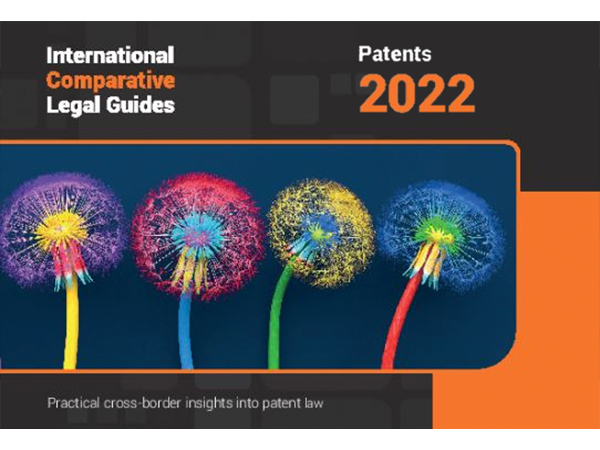
Intellectual Property
Viewpoints
Filter by:
Rule 11—Use It Wisely
July 20, 2022 | Blog | By Brad M Scheller, Robert Sweeney
The power of Rule 11 – as with any weapon – must be employed diligently and with good judgment, as recently reiterated by the Northern District of Ohio.
SCOTUS Declines to Answer Calls for Clarification in American Axle v. Neapco
July 13, 2022 | Blog | By Brad M Scheller, Andrew DeVoogd, Matthew Karambelas, Amanda Metell
The United States Supreme Court denied certiorari in the closely observed case American Axle & Manufacturing, Inc., v. Neapco Holdings LLC. The Court’s refusal to hear the case disappointed patent practitioners nationwide—and likely also members of the Federal Circuit Court of Appeals, which itself has been clamoring for guidance.
Rule 11 Sanctions Appropriate for Frivolous Inventorship Pleading
July 13, 2022 | Blog | By Michael Renaud, Brad M Scheller, Robert Sweeney
While litigants may oft use Rule 11 prematurely or inappropriately, it does have its proper time and place when deployed as intended. In the patent context, examples include when claim elements are clearly missing in an accused product but a patent owner refuses to withdraw infringement allegations or, conversely, when a defendant continues to contest infringement when all claim limitations are clearly present in the accused product. Rule 11 grounds also arise in different contexts, as in the recent case of Imprenta Services, Inc.v. Karll.
Benefits of Using Copyrights to Protect Artificial Intelligence and Machine Learning Inventions
July 11, 2022 | Blog | By Monique Winters Macek, Meena Seralathan
We previously discussed which portions of an artificial intelligence/machine-learning (“AI/ML”) platform could be patented or protected under trade secret, such as related to biotech and synthetic biology. Equally important to the discussion of how to protect components of an AI/ML platform, however, is the extent to which copyright protection may be useful or beneficial to the developer of the platform. In this post, we explain what can be protected by copyright in an AI/ML platform. We also explore when it is appropriate to protect portions of AI/ML platforms using a copyright, how to properly enforce copyrights, as well as when to consider using copyright protection over patent or trade secret protection.
5th Circuit Confirms Avanci SEP Pool is Safe: No Antitrust Issue with Avanci’s Pool
July 6, 2022 | Blog | By Daniel Weinger, Michael Renaud, Bruce Sokler, James Thomson
Avanci’s pool retains its 5th Circuit win, in a slightly different way, after an unusual turn of events where the panel rescinded its prior opinion and issued a new one. The new opinion affirms the district court’s ruling that Continental failed to state a claim under the Sherman Act (antitrust laws) thereby dismissing the case. The original opinion found that Continental lacked standing to pursue its claims because it was not a third party beneficiary of the standard setting organization contract. Although the new ruling leaves some questions unanswered in the long-running dispute between a would-be implementer (Continental) and holders of standard essential patents (SEPs), the opinion rejects applying the antitrust laws in the SEP/FRAND context.
Five Tips For Every In-House Counsel Launching an Open Source Software Program
July 5, 2022 | Blog | By Marguerite McConihe, Greg Penoyer
Used properly, Open Source Software (OSS) is an excellent tool. It saves your business time and money, enables interoperability of product platforms, and developers love it. But used improperly, it can be financially and operationally devastating. For example, the statutory damages for failure to properly adhere to the OSS copyright notice can be up to $150,000 per act of infringement. Those damages can quickly add up to serious consequences, whether preventing a sale or merger of your company or the destruction of the value of the affected products. Another serious risk is that once OSS is used in your code base and deployed in distributed products, if your tech teams are not monitoring and applying bug fixes, known vulnerabilities become Trojan horses of opportunity for bad actors. The good news is that protecting your company from these types of risks is rather simple. We have outlined below key steps and processes in-house counsel should take to work with your business stakeholders to mitigate these risks.
DOJ Breaking with Big Tech Approach to SEPs
June 13, 2022 | Blog | By Daniel Weinger, Michael McNamara, Michael Renaud, James Thomson
On June 8, 2022, the DOJ, USPTO, and the National Institute of Standards and Technology (NIST) (collectively, the Agencies) issued a new statement on FRAND licensing (2022 Statement) providing no set policy regarding Standards Essential Patents (SEPs), which should inure to the benefit of patent owners. By issuing this statement and declining to adopt their 2021 Draft Policy (2021 Draft Policy), the Agencies effectively neutralized their policy on SEP licensing and provide no guidance to parties in SEP licensing discussions. Even with no guidance, however, the Agencies are reserving the right to police negotiations and prosecute opportunistic behavior by either side in a case-by-case basis, creating a circumstance where negotiators may not know if they are raising the Agencies’ ire. Though knowledge of the evolving multinational case law related to SEP license negotiation provides reasonable understanding of the necessary procedure.
Rules for Complainant Success in ITC Trade Secret Litigation
May 16, 2022 | Blog | By Jonathan Engler, Michael Renaud
Successful ITC trade secret complainants follow these rules before filing the complaint in Section 337 investigations:
Why is the ITC a Great Venue for Protecting Trade Secrets? Speed and Extraterritorial Authority
May 12, 2022 | Blog | By Jonathan Engler, Michael Renaud
To be a successful trade secret litigant at the ITC, it is critical to be mindful of unique substantive and procedural aspects of Section 337 litigation. These differences offer both promise and peril for complainants.
The ITC Should Put Its Foot Down on Patent Hold-out and Hold-up
May 9, 2022 | Blog | By Jonathan Engler, Michael Renaud
Opponents of the use of Section 337 by Standard Essential Patent (SEP) holders claim that the threat of ITC exclusion orders lends itself to patent hold-up. These opponents, however, can point to no instance in which an ITC respondent has successfully made its case for “patent holdup” to the Commission. Section 337 investigations have many opportunities for respondents to actually prove that the Complainant is abusing the process by seeking royalties on something other than fair and reasonable terms. The absence of any such successful showing by a respondent speaks for itself.
Determining Entity Status Before the United States and Patent Trademark Office: Large, Small, or Micro?
May 3, 2022 | Blog | By Christina Sperry, Elissa Kingsland
At the time of filing any patent application with the United States and Patent Trademark Office (USPTO), patent applicants must designate their entity status. Selecting the correct entity status can significantly reduce costs, so it is important to determine the correct entity status and update the status as needed throughout a patent’s and patent application’s life. There are three types of entity statuses: large, small, or micro, with small and micro entities being entitled to reduced USPTO fees
Sales Projections and a “Litigation Risk Multiplier” Are Fair Game When Assessing Reasonable Royalty Damages
April 29, 2022 | Blog | By Peter Snell, Meena Seralathan
A recent decision from Judge Stark, now presiding at the Federal Circuit, endorses the use, by a patent owner’s damages expert, of sales projections and a “litigation risk multiplier” in determining reasonably royalty damages. In the decision, Judge Stark confirmed that a damages expert may rely on such evidence notwithstanding defendants’ Daubert challenges to the contrary.
ITC Must Enforce Standard-Essential Patents At The Border
April 28, 2022 | | By Jonathan Engler, Michael Renaud
Mintz Member and Chair of the firm’s Intellectual Property Division Michael T. Renaud and Member Jonathan J. Engler co-authored an article published by Law360 covering the ITC's ability to enforce standard-essential patents at the border. The article summarizes, "[The ITC] armed with powerful remedial orders under Section 337 of the Tariff Act that can stop infringing imports, is uniquely situated to support U.S. competitiveness in international trade by enforcing standard-essential patents at the border".
EXCLUSIVE RIGHTS: Intellectual Property — Will the Unified Patent Court Change Everything?
April 21, 2022 | Podcast | By Daniel Weinger
In this episode of the EXCLUSIVE RIGHTS: Intellectual Property podcast, founding host Dan Weinger speaks with Dr. Thomas Gniadek, a seasoned EU patent and trade secrets litigator with Simmons & Simmons in Munich, Germany, about the Unified Patent Court (UPC).
Judge Alsup Certifies Two Hot Button Issues on Standard for Pleading Willful Infringement for Interlocutory Appeal to the CAFC
March 23, 2022 | Blog | By Joe Rutkowski, Peter Cuomo, Adam Samansky
On March 16, 2022, U.S. District Judge William Alsup of the Northern District of California certified two of the hot button issues splitting district courts on the standard for pleading willful infringement, holding that:
- The complaint itself is insufficient to provide the requisite knowledge of the asserted patents and alleged infringement; and
- Patent owners need not otherwise allege egregious infringing behavior as part of a willful infringement claim.
Recognizing the split among district courts on these issues, the court certified its decision for interlocutory appeal to the Court of Appeals for the Federal Circuit under 28 U.S.C. § 1292(b). Thus, the Federal Circuit may soon have an opportunity to resolve this long-standing split among districts, which, according to Judge Alsup, has consumed a “vast amount of resources” in litigation around the country.
Amazon’s Utility Patent Neutral Evaluation Proceeding: Let the Seller Beware
March 22, 2022 | Blog | By Michael Graif, Matthew Hurley
Speed and efficiency have long been Amazon’s hallmarks, and its dispute resolution system for patent infringement claims is no exception. Amazon’s Utility Patent Neutral Evaluation (“UPNE”) proceeding is quickly emerging as an efficient and powerful dispute resolution tool, especially in the consumer goods industry, where sellers rely on Amazon for a significant portion of their sales. So efficient, in fact, that sellers who have either ignored or not taken a UPNE seriously have found their products suddenly banned from Amazon’s website, leaving them with no recourse other than to file a declaratory judgment action in federal court and request relief that is typically far from quick or certain.
Avoiding Unforced Tech DI Errors at the ITC
March 11, 2022 | Blog | By Jonathan Engler, Michael Renaud
The key to success as a Complainant in the ITC is careful preparation, long before the complaint is filed. Nowhere is this more important than in preparing and planning a Complainant’s domestic industry case. The so-called “technical prong” of the domestic industry requirement is a much more common point of failure for ITC complainants than the “economic prong.” The “technical prong” requirement is essentially the same as for infringement: an ITC complainant must “show that there is a domestic industry product that actually practices” at least one claim of the asserted patent. Microsoft, 731 F.3d 1354 at 1361. (Fed. Cir. 2013). It is unfortunately not uncommon at the ITC for Complainants to prepare meticulous infringement proofs for the accused products but then to fail to show that the domestic industry products practice a claim of the asserted patents.
Open Question: Use of Stolen Trade Secrets May or May Not Qualify as a Predicate Act Under RICO
March 10, 2022 | Blog | By Adam Samansky, Michael McNamara, Nicholas Armington, Oliver Ennis
Since the passage of the Defend Trade Secrets Act (DTSA), trade secret owners have been able to use allegations of trade secret misappropriation under the DTSA to support civil claims under the Racketeer Influence and Corrupt Organizations Act (RICO). Specifically, DTSA violations that qualify as predicate acts can be used to show a pattern of racketeering activity, which may allow a trade secret owner to state civil claims under RICO, and thus take advantage of the substantial remedies that the RICO statute provides, including the potential for treble damages and attorney’s fees.
Expert Patent Damages Opinions Hit the Spotlight as Federal Circuit Scuttles Two Patent Infringement Verdicts Worth $1.2 Billion in One Day
March 9, 2022 | Blog | By Andrew DeVoogd, James Thomson
No Harm, No Foul, and No Standing for Would-be SEP Implementer: 5th Circuit Changes Narrative on Patent “Hold Up”
March 3, 2022 | Blog | By Daniel Weinger, Michael Renaud, Bruce Sokler, James Thomson
Explore Other Viewpoints:
- Antitrust
- Appellate
- Arbitration, Mediation & Alternate Dispute Resolution
- Artificial Intelligence
- Awards
- Bankruptcy & Restructuring
- California Land Use
- Class Action
- Complex Commercial Litigation
- Construction
- Consumer Product Safety
- Cross-Border Asset Recovery
- Debt Financing
- Direct Investing (M&A)
- Diversity
- EB-5 Financing
- Education & Nonprofits
- Employment
- Energy & Sustainability
- Environmental Enforcement Defense
- Environmental Law
- FDA Regulatory
- Federal Circuit Appeals
- Financial Institution Litigation
- Government Law
- Growth Equity
- Health Care
- Health Care Compliance, Fraud and Abuse, & Regulatory Counseling
- Health Care Enforcement & Investigations
- Health Care Transactions
- Health Information Privacy & Security
- IP Due Diligence
- IPRs & Other Post Grant Proceedings
- Immigration
- Insolvency & Creditor Rights Litigation
- Institutional Investor Class Action Recovery
- Insurance & Financial Services
- Insurance Consulting & Risk Management
- Insurance and Reinsurance Problem-Solving & Dispute Resolution
- Intellectual Property
- Investment Funds
- Israel
- Licensing & Technology Transactions
- Life Sciences
- Litigation & Investigations
- M&A Litigation
- ML Strategies
- Medicare, Medicaid and Commercial Coverage & Reimbursement
- Mergers & Acquisitions
- Patent Litigation
- Patent Prosecution & Strategic Counseling
- Pharmacy Benefits and PBM Contracting
- Portfolio Companies
- Privacy & Cybersecurity
- Private Client
- Private Equity
- Pro Bono
- Products Liability & Complex Tort
- Projects & Infrastructure
- Public Finance
- Real Estate Litigation
- Real Estate Transactions
- Real Estate, Construction & Infrastructure
- Retail & Consumer Products
- Securities & Capital Markets
- Securities Litigation
- Special Purpose Acquisition Company (SPACs)
- Sports & Entertainment
- State Attorneys General
- Strategic IP Monetization & Licensing
- Tax
- Technology
- Technology, Communications & Media
- Technology, Communications & Media Litigation
- Trade Secrets
- Trademark & Copyright
- Trademark Litigation
- Value-Based Care
- Venture Capital & Emerging Companies
- White Collar Defense & Government Investigations
- Women's Health and Technology






